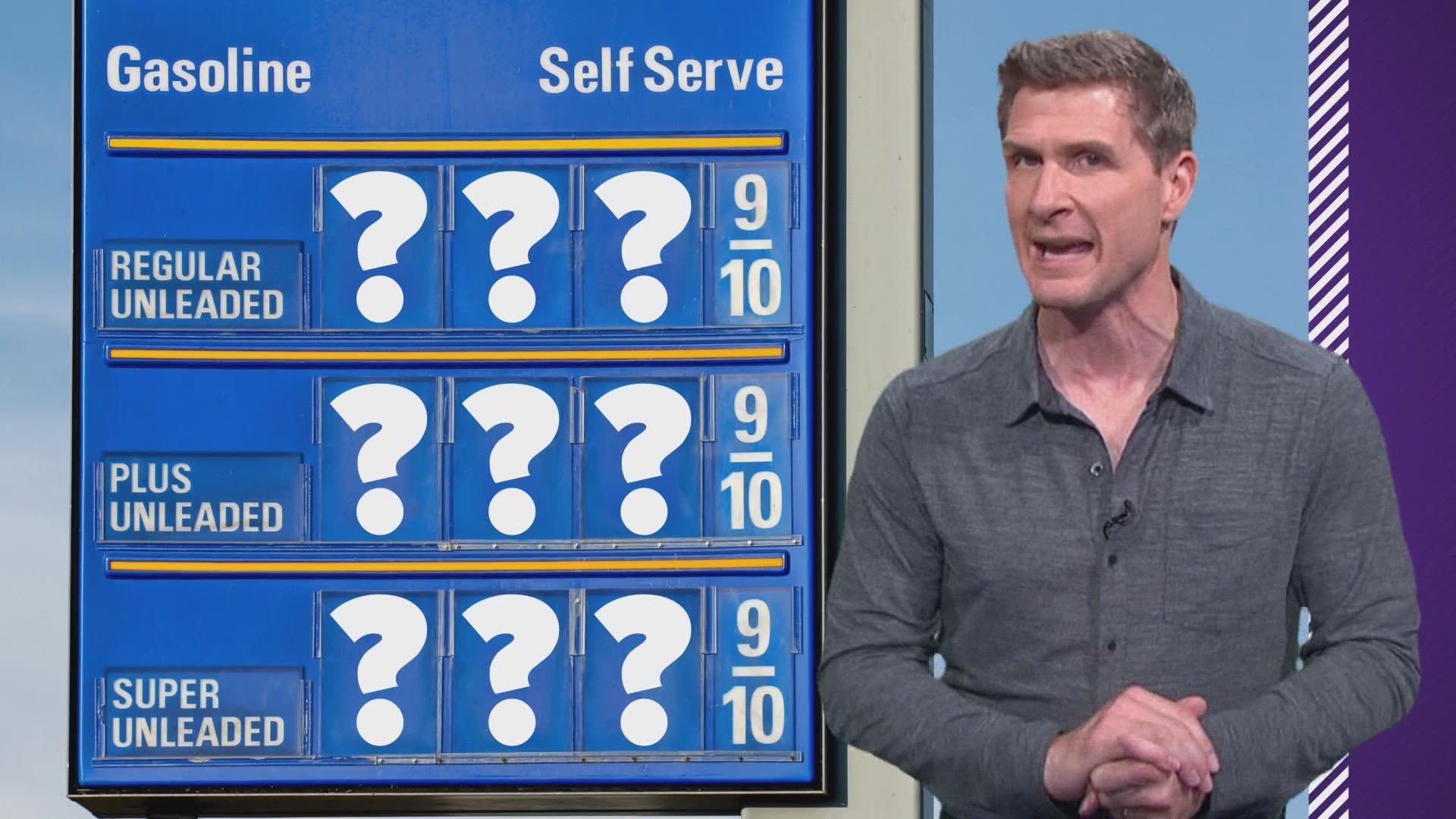TEXAS, USA — With gasoline prices surging, we recently detailed some ways drivers can get more mileage out of the increasingly expensive fuel in their vehicles.
Since then, prices have risen even further; and many people have been asking when this will get better. We asked University of Houston Energy Fellow and Economics Professor Ed Hirs for a prediction and he didn’t have good news on that front, “I expect the price of gasoline to stay up for the duration of the conflict in Ukraine.”
Russia’s invasion of Ukraine has caused chaos for gasoline prices globally. And Professor Hirs says big oil-producing countries around the world haven’t done nearly enough to make up for the supply shortfall that was created when Western nations punished Russia for its invasion by turning away from its oil exports.
Most of the price of gasoline is determined by the price of oil
Most of the price of gasoline is determined by the price of oil. And oil is very expensive right now. Some think it would become cheaper if there were more rigs drilling for more oil. But Professor Hirs says that’s not happening at nearly the scale it should be.
“The thing that I've been watching is not the U.S. rig count…the international rig count in the Middle East. The rig count is down by more than 25% from where it was pre-pandemic. It has been really slow to recover in the Middle East. I'm not sure that OPEC has enough new production coming online to replace the production they do sell," said Hirs.
Why aren't oil companies drilling more?
According to Baker Hughes, in the U.S., there were 718 new rigs drilling for oil in May of 2022. That’s down significantly from the 986 rigs that were working in May of 2019. In the Middle East, there were 314 new rigs drilling for oil in May of this year, also down significantly from the 410 rigs that were operating in May of 2019.
But why wouldn’t oil companies want to drill more? Professor Hirs says the status quo that is disadvantageous for consumers is quite lucrative for oil producers who are getting a premium for their oil in this tight market, “I'm fairly certain they like the prices.”
In the first three months of this year, ‘Big Oil’ made really big money. It’s not just producers though. Refiners are raking it in, too…partly because the number of U.S. refineries that turn oil into gas fell again last year.
In fact, the number of American refineries has been declining for decades--even as consumers are in need of more gasoline. According to the U.S. Energy Information Administration, there were 301 refineries in the U.S. in 1982. That number dropped to 153 by 2002 and then fell to just 130 refineries in 2022.
And this article doesn’t offer much hope that new refineries will be built in the U.S., because companies are reluctant to make significant investments into fossil fuel projects at a time when consumers and manufacturers are moving to greener options. Also under the current status quo, refiners are making handsome profits.
At the refineries that are still operating, when they crack oil into different types of petroleum products like gasoline and diesel, there’s something called the "crack spread."
It shows how much money refiners can make by subtracting how much they paid for the crude oil from how much they can charge for the refined petroleum products they create from it. Not surprisingly, the crack spread (the money they make) has been going straight up as the price of gasoline has been doing the same.

